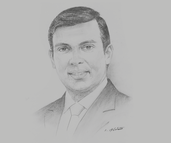Shyam Sathasivam, President, Sri Lanka Chamber of Pharmaceutical Industry: Interview

Interview: Shyam Sathasivam
With the country importing around 85% of its pharmaceuticals, what areas do you identify as most in need of investment moving forwards?
SHYAM SATHASIVAM: There are no quick fixes in the health care sector, and the benefits of any alterations to policy tend to play out over the medium to long term. That said, one area to target would be the development of our diagnostic capabilities. Within the industry, the “rule of halves” is often invoked. This states that only half of those who are diagnosed with a disease receive treatment from a qualified health care professional, and just half of these people achieve their treatment targets. Unfortunately, the rule of halves does not end there: only half of this relatively small group actually achieve the desired outcome and live a disease-free life.
Essentially, there tends to be an exponential reduction in the number of people who receive treatment relative to those who require it. This is ultimately a problem of awareness. If, parallel to investments to enhance our diagnostic capabilities, the general public is made more aware of what they can do to prevent illness through early diagnosis, I believe that we as a nation can start enjoying the benefits of these investments fairly quickly. Early diagnosis can often pre-empt the need for treatment, which is significantly more complicated and expensive than diagnosis.
What are the most pressing challenges in providing adequate health care in order to combat disease?
SATHASIVAM: Access to health care includes access to medicine. Currently, around 80% of inpatient care and 50% of outpatient care is provided by the public system, while the private sector accounts for the remainder.
Overall, there is a lot to be positive about with regard to our health care system and policies, and generally our system has provided positive health care outcomes for the majority of patients. A powerful advantage of our unified system is that it enables the government to draw upon substantial resources across the island in order to take action on a national scale. However, we still face substantial challenges in terms of preventing and combatting disease, while at the same time ensuring optimal health care delivery.
A pressing issue remains the establishment of a clear and transparent pricing mechanism for medicines and devices in order to ensure that the industry is able to sustain the import or local production and delivery of quality medicines to end consumers. All industry players are currently under inordinate pressure, as price controls for 73 essential medicines were introduced in 2016 and 2018 and, since the last price revision, the Sri Lankan rupee has depreciated against the dollar by close to 20%, as of January 2019.
Can medical tourism help to drive growth in the tourism sector, and how competitive is Sri Lanka in this segment relative to the region?
SATHASIVAM: Sri Lankan specialists are arguably on par with any doctor in the region. Where Sri Lanka has room to improve is in terms of its cost-effectiveness, particularly in light of its heavy tax burden, and in terms of auxiliary service levels. Currently, only three hospitals in the country have gold standard Joint Commission International accreditation, which is a key certification sought by tourists. There are significant levels of medical tourists coming in from the Maldives, the Seychelles and India. However, if we really want to harness the tourist numbers required to substantially drive revenue, the private sector needs to look into tax incentives and focus on improving patient care by modernising infrastructure and training staff.
One area in which Sri Lanka can differentiate itself is the field of Ayurvedic, homeopathic and alternative medicine. This specialisation, combined with the country’s undeniable natural and cultural heritage, could make it more attractive than regional competitors, such as Singapore and India, to medical tourists, particularly those who are looking for palliative care and treatment.
You have reached the limit of premium articles you can view for free.
Choose from the options below to purchase print or digital editions of our Reports. You can also purchase a website subscription giving you unlimited access to all of our Reports online for 12 months.
If you have already purchased this Report or have a website subscription, please login to continue.

